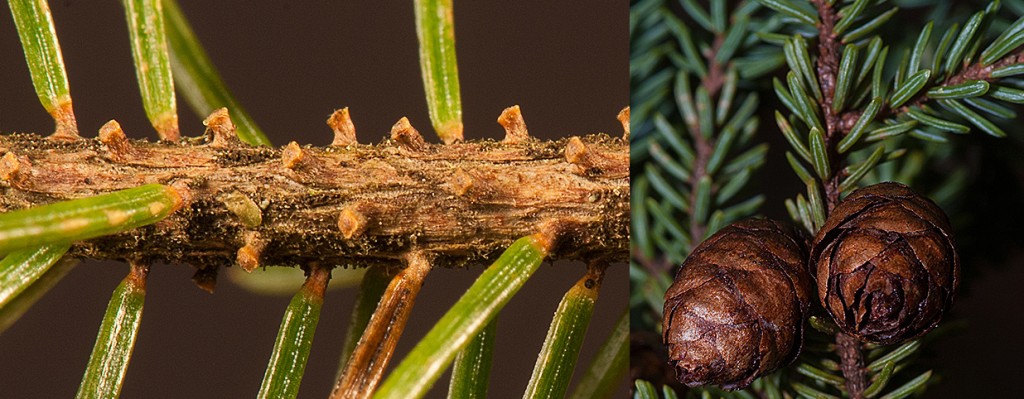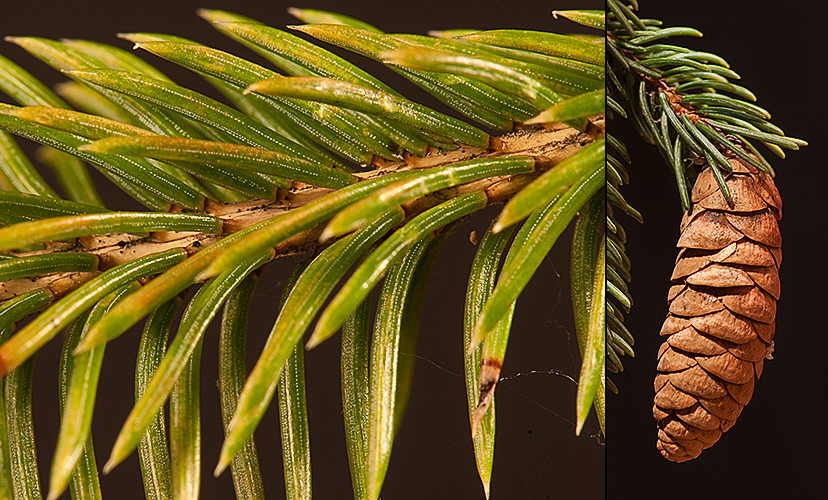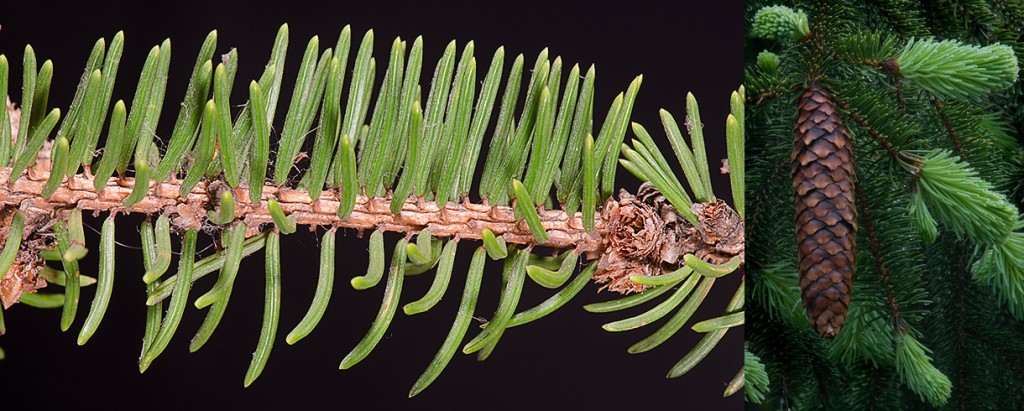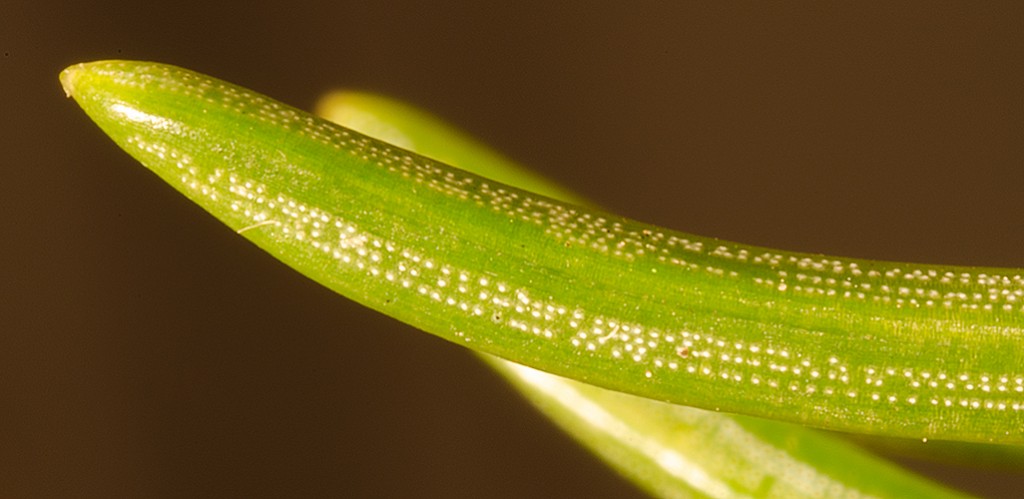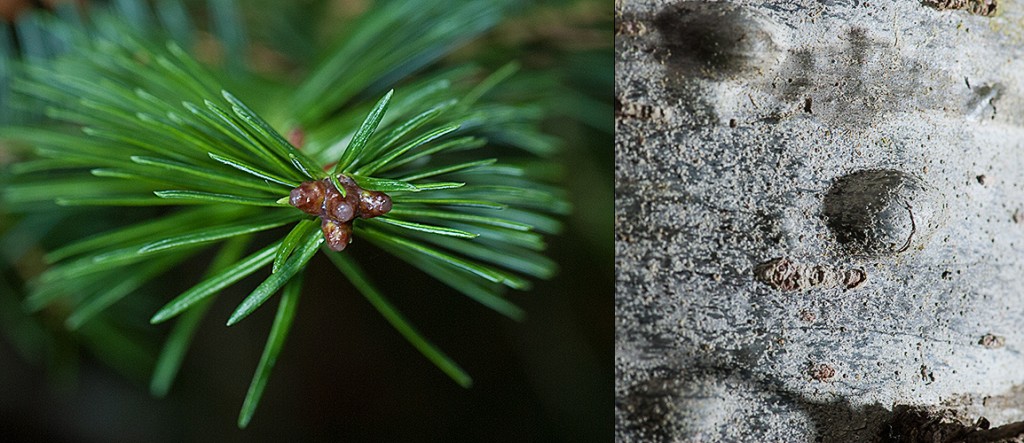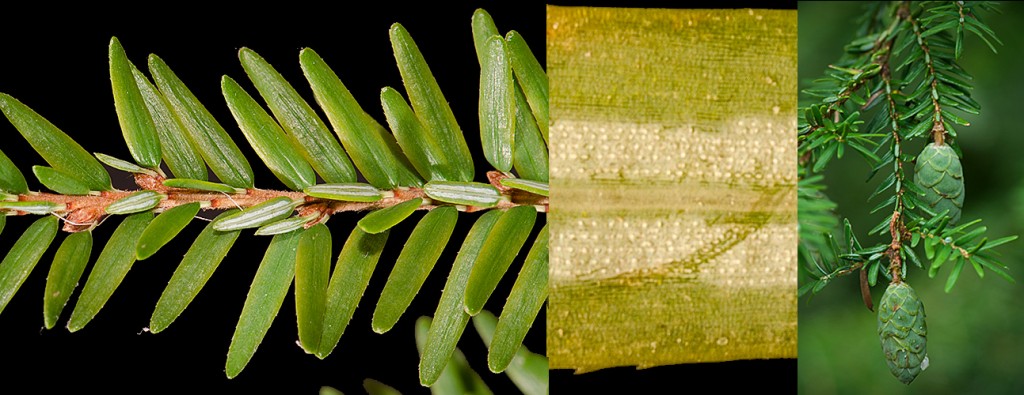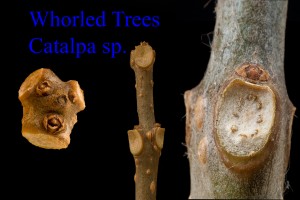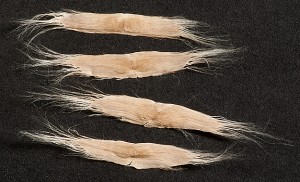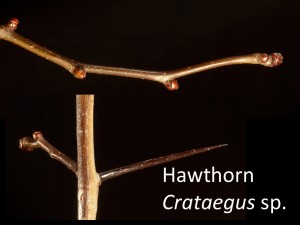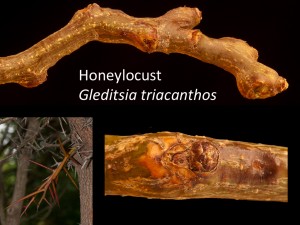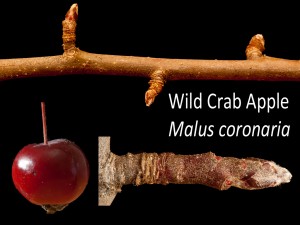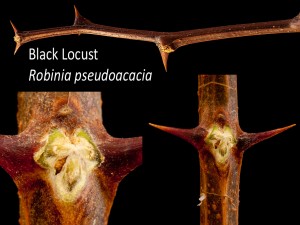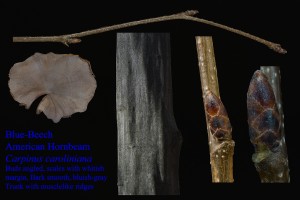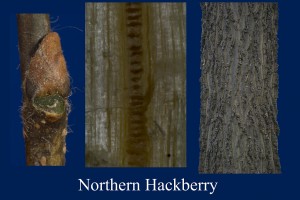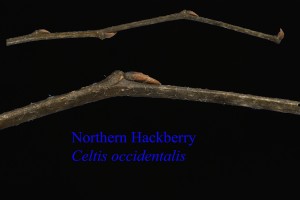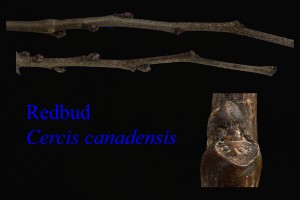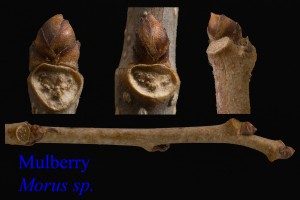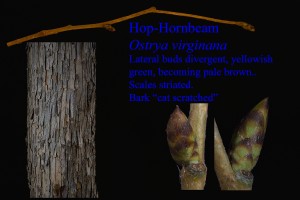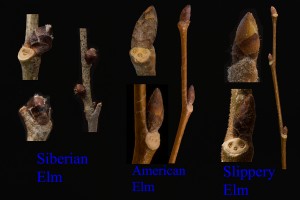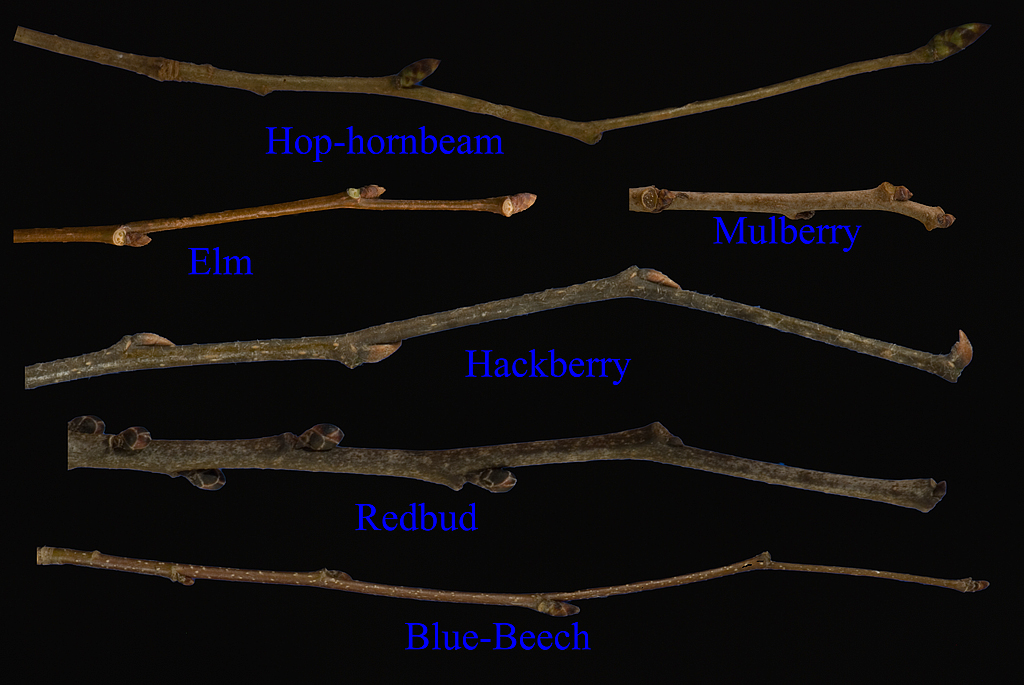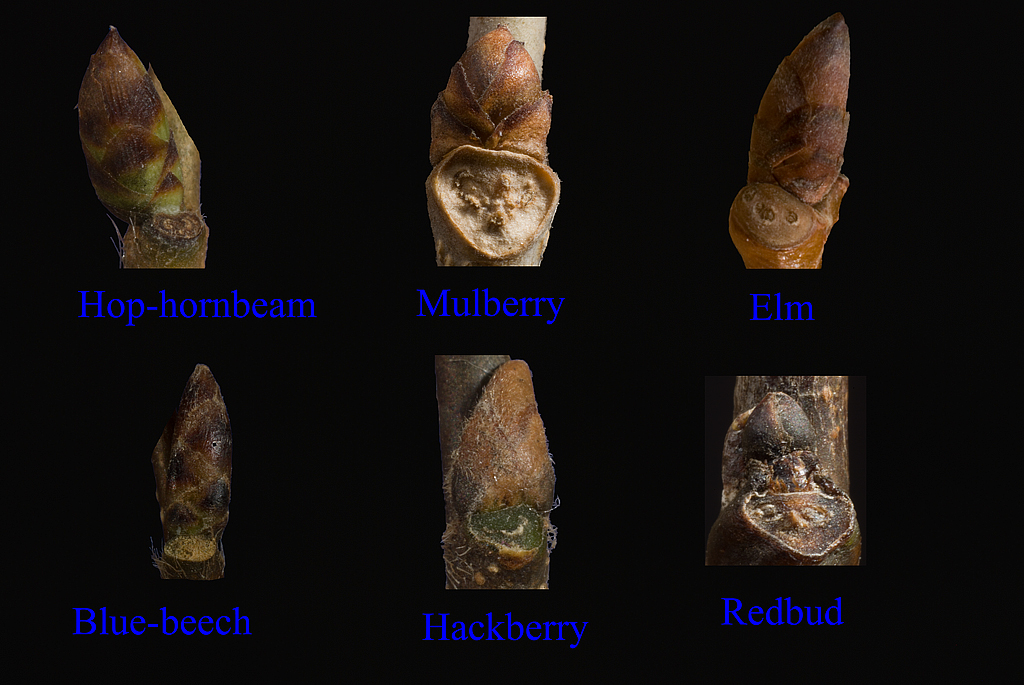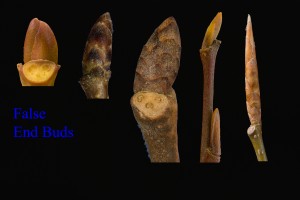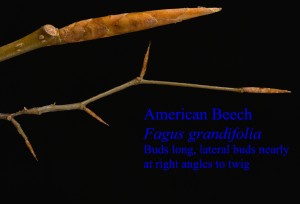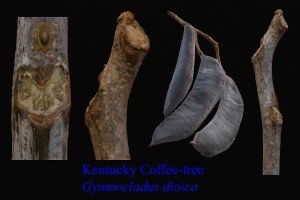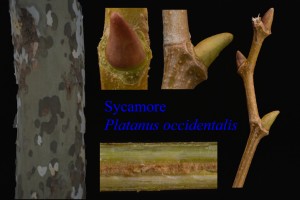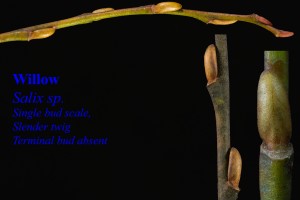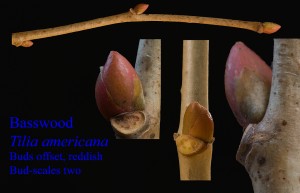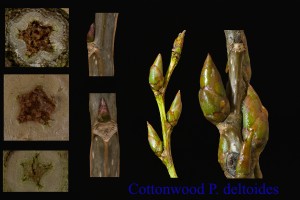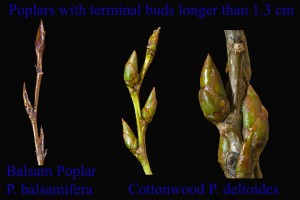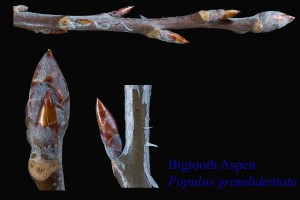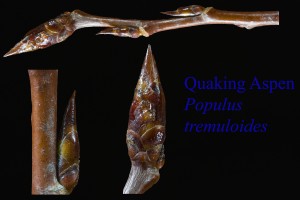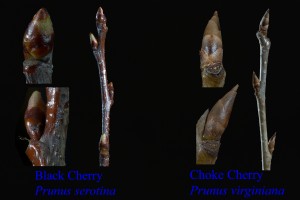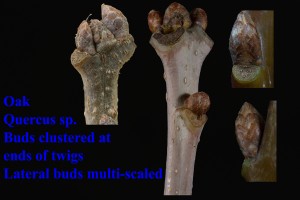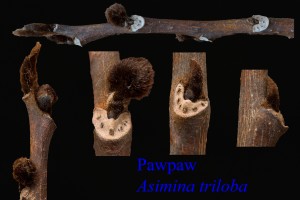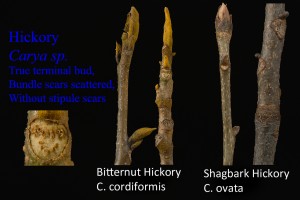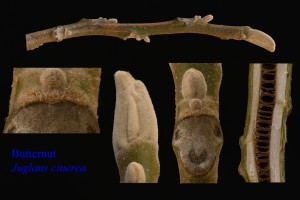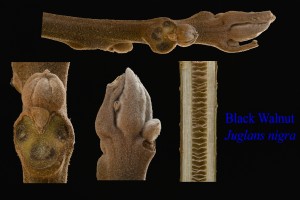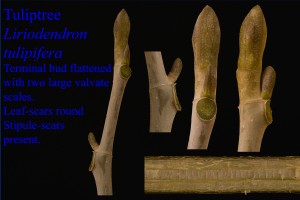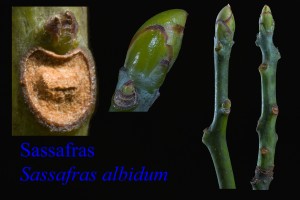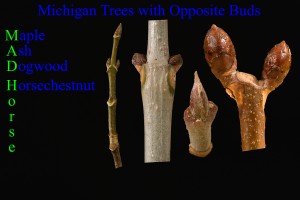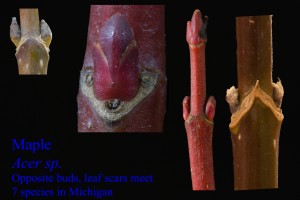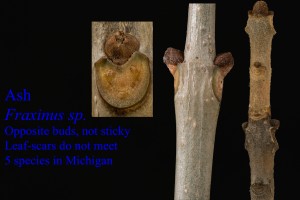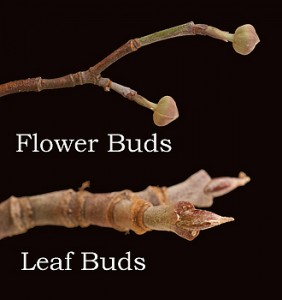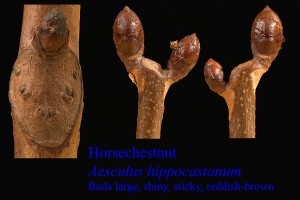Spruces have needles less than 20mm (3/4 inch) long with square cross-sections. They never occur in bunches, just one needle per node. They can be confused with Balsam Fir (Abies balsamea) but Firs have needles with flattened cross-sections. If you can roll a needle in your fingertips then it is a spruce.
Michigan has two native spruces, Black Spruce (Picea mariana) and White Spruce (P. glauca). Norway Spruce (P. abies) is now naturalized into the state.
Black Spruce has needles shorter than 16mm (5/8 inch) and densely pubescent, meaning furry, first year branchlets. The needle bases, which sit on a peg-like projection, are difficult to see. These peg-like projections stick out at 90 degrees to the twig. If cones are present, they are about as wide as they are long. In southern Michigan, Black Spruce grows only in cool bogs. North of Bay City, it will also grow in upland forests and interdunal swales. Even in the north, it prefers a damp habitat and often occurs with Tamarack (Larix laricina) and White Cedar (Thuja occidentalis). The common name refers to the dark needles this tree normally has.
White Spruce has needles that are normally longer than 16mm (5/8 inch) and hairless first year branchlets. The needle bases are easily seen. The peg-like projections point forward at approximately 60 degrees from the twig. Cones are two to three times longer than wide. The tree’s native range is north of West Branch. It grows in similar habitats as Black Spruce but will also thrive in drier locations. The common name refers to the waxy layer on the young needles.
The native range of Norway Spruce is central and northern Europe. It is escaping throughout Michigan. The branchlets droop and its cones are large, approximately 130mm (5 inch) long. Norway Spruce is commonly planted and beginning to escape into natural areas. Its needles are stiff and have rows of minute openings properly called stomata.
Copyright 2014 by Donald Drife
Webpage Michigan Nature Guy
Follow MichiganNatureGuy on Facebook



